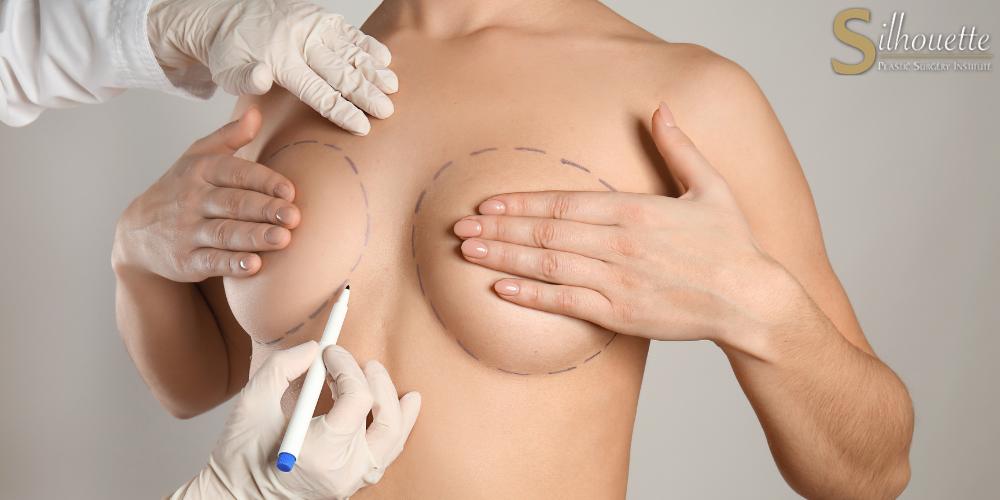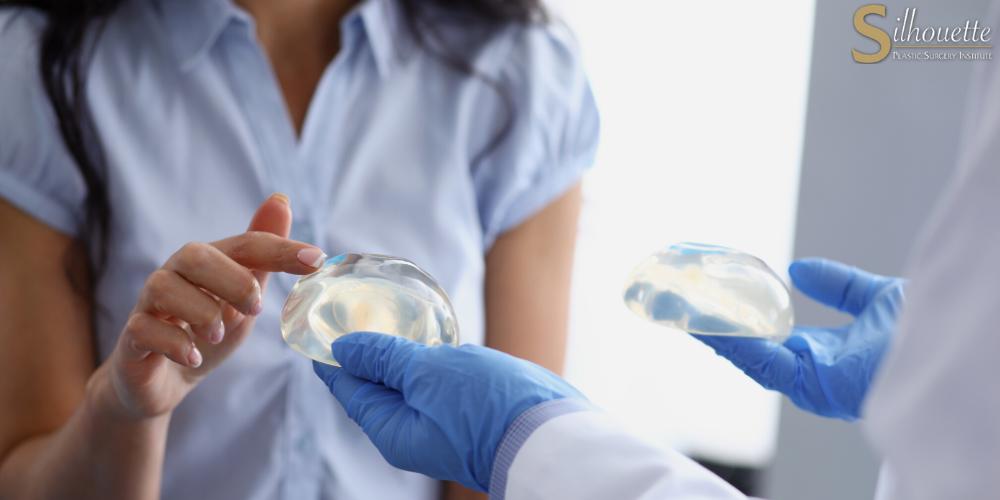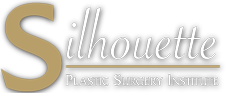There’s a lot of decisions to make before undergoing breast augmentation surgery. Firstly, you have to choose between saline vs. silicone implants. Next, you have to choose the size, shape, and type of implant. Lastly, your surgeon will help you decide which implant placement is best – above or below the chest muscle? It’s hard to make these decisions without the help of a board certified plastic surgeon. So if you’re considering breast augmentation surgery and you have no idea what the difference is between the two main types of implants, no need to fear. Below, we discuss saline vs. silicone implants.
If your current breast size or shape is causing your self-esteem to suffer, a breast augmentation may be the right choice for you. Board-certified plastic surgeon Dr. Daneshmand has more than 30 years of experience in making his clients feel comfortable and beautiful in their bodies. He can do the same for you. Call 949-359-8397 to schedule an appointment at Silhouette Plastic Surgery Institute today.
What’s the Difference: Silicone vs Saline Implants
Both types of breast implants are very similar in that they both have a silicone outer shell. But each type of implant has a different type of filling. Additionally, saline and silicone implants differ in look, feel, and potential risks. Below, we discuss the main differences between the two types of implants so that you can know exactly what you want ahead of your breast augmentation surgery.
Saline Breast Implants
Saline breast implants have an outer silicone shell that is filled with sterile salt water. During a breast augmentation or breast reconstruction, a plastic surgeon will insert the empty silicone shells above or below the chest muscle, and then fill them up with water. Because saline breast implants are inserted into the breast pocket while empty, the incisions are often smaller. Therefore, breast augmentation patients may have a smaller scar.
Two types of saline implants used to be widely used: smooth and textured implants. But textured shells came with a high rate of failure. Additionally, textured implants have been linked to numerous health problems, including Breast Implant-Associated Anaplastic Large Cell Lymphoma (BIA-ALCL) and Breast Implant-Associated Squamous Cell Carcinoma (BIA-SCC). So many plastic surgeons have stopped using them in breast augmentation surgeries.
One of the main downsides of saline-filled implants is that they don’t mimic the feel of natural breast tissue like silicone gel implants do. Many patients describe the saline breast implant as very firm. Additionally, some patients can feel the sterile saltwater sloshing inside their breasts, especially during intense movements. Another possible downside of saline breast implants is that they have a higher risk of showing through the skin, especially if the implant is inserted on top of the pectoral muscle. This complication is called “rippling.”
The FDA approved saline-filled implants for all people aged 18 or older.
Silicone Breast Implants
Silicone breast implants have an outer silicone shell that’s filled with silicone gel. Many breast augmentation patients say that silicone gel breast implants feel the most similar to natural breasts.
There are many shapes and sizes of silicone gel-filled implants that patients can choose from. One of the more popular types of silicone gel implants are “gummy bear” implants, which are firmer than other types.
Silicone gel implants pose a higher health risk than saline implants if they rupture, which is partially why they have a higher FDA approval age of 22 years old.
Breast Implant Rupture: What Happens?
One of the biggest risks that come with all breast implants is rupturing. Silicone and saline implants rupture differently in the body. Additionally, a silicone implant rupture is often more dangerous than a saline implant rupture. We explain all this and more below.
Saline Implant Rupture
When a saline implant ruptures, you’ll likely know right away because your breasts will look and feel uneven. Saline implants tend to leak out water over the course of a few hours or a few days. However the leakage is not dangerous because the body absorbs the sterile salt water. While saline implant rupture is not dangerous to a patient’s health, they will still need to undergo breast revision surgery in order to fix the unevenness.
Silicone Implant Rupture
Silicone implant rupture – often called “silent rupture” – is more dangerous and painful. It’s called a silent rupture because most women don’t even know their implants have ruptured until they feel breast pain and unevenness. This is because the thicker silicone gel stays inside the scar tissue that surrounds the implant. Usually, the gel stays inside this capsule of scar tissue. Occasionally, though, the gel can spread to other parts of the body, which can cause health issues. Similarly to a saline implant rupture, patients will need to undergo a breast revision surgery.

Silicone vs Saline Implants Cost
In general, saline implants are cheaper than silicone implants. Still, the cost of breast augmentation surgery will vary depending on geographic location, plastic surgeon experience, and of course: implant type. It’s also important to remember that breast implants are an investment and they may need to be fixed or replaced over time. That cost of revision and/or replacement will add up as well.
According to the American Society of Plastic Surgeons, the average cost of a breast augmentation in 2020 was $4,516. This cost may or may not include the price of the implants. A report from the Institute of Healthcare Policy and Innovation at the University of Michigan claims that many plastic surgeons charge their patients an extra implant fee, depending on the type of breast implants they choose. This report lists the following implant price ranges from least to most expensive:
- Saline Implants: $250 to $700 per implant.
- Silicone Implants: $700 per $1,000 per implant.
- Gummy Bear Implants: $1,350 per implant.
Most patients do not receive health insurance coverage for breast surgeries unless the breast surgery in question is a breast reconstruction due to cancer. To figure out your exact price tag, be sure to schedule an appointment at Silhouette Plastic Surgery Institute.
Are Saline Implants Safer Than Silicone?
Both silicone and saline implants are generally safe for the average person, especially if an experienced board-certified plastic surgeon – like Dr. Daneshmand – performs your breast augmentation.
There is limited research that suggests that there’s a link between silicone implants and autoimmune diseases like lupus and rheumatoid arthritis. But because both types of implants technically contain silicone, you may want to avoid breast implants entirely, especially if you’re actively suffering from an autoimmune disease.
Additionally, some breast augmentation patients experience breast implant illness (BII) with both types of implants. While breast implant illness is technically an unofficial medical diagnosis, it can create some really debilitating symptoms such as joint pain, muscle pain and weakness, mental health issues, chronic fatigue, brain fog, hair loss, gastrointestinal problems, chronic pain, and more. Usually, doctors will make this diagnosis after they have tested the patient for every other type of health issue. Most patients experience immediate relief after breast implant removal.
Risks Associated With Both Saline and Silicone Implants
Both silicone and saline implants come with a variety of other risks and complications too, such as:
- Capsular contracture which is when a thick capsule of scar tissue forms around the implant, often causing breast pain and unevenness
- Double bubble, which is when the breast implant slides out of its pocket and down into the inframammary crease
- Infection
- Changes in breast and/or nipple sensation
- Breast implant ruptures
- Visible rippling
- Disliking breast size or shape which usually leads to another surgery

Breast Augmentation Surgeon in Bakersfield and Orange County, California
Getting breast implants is a major decision that can impact you physically, emotionally, and financially. There’s a lot to decide – saline vs. silicone implants, above or below the chest muscle, breast size and shape, and more. That’s why it’s so important to speak with board-certified plastic surgeon Dr. Daneshmand at Silhouette Plastic Surgery Institute. He will listen to your concerns and cosmetic goals and help you make all the right decisions so that you can have your dream figure. Check out our breast augmentation before and after photos here, then call 949-359-8397 to schedule an appointment at our clinic.
